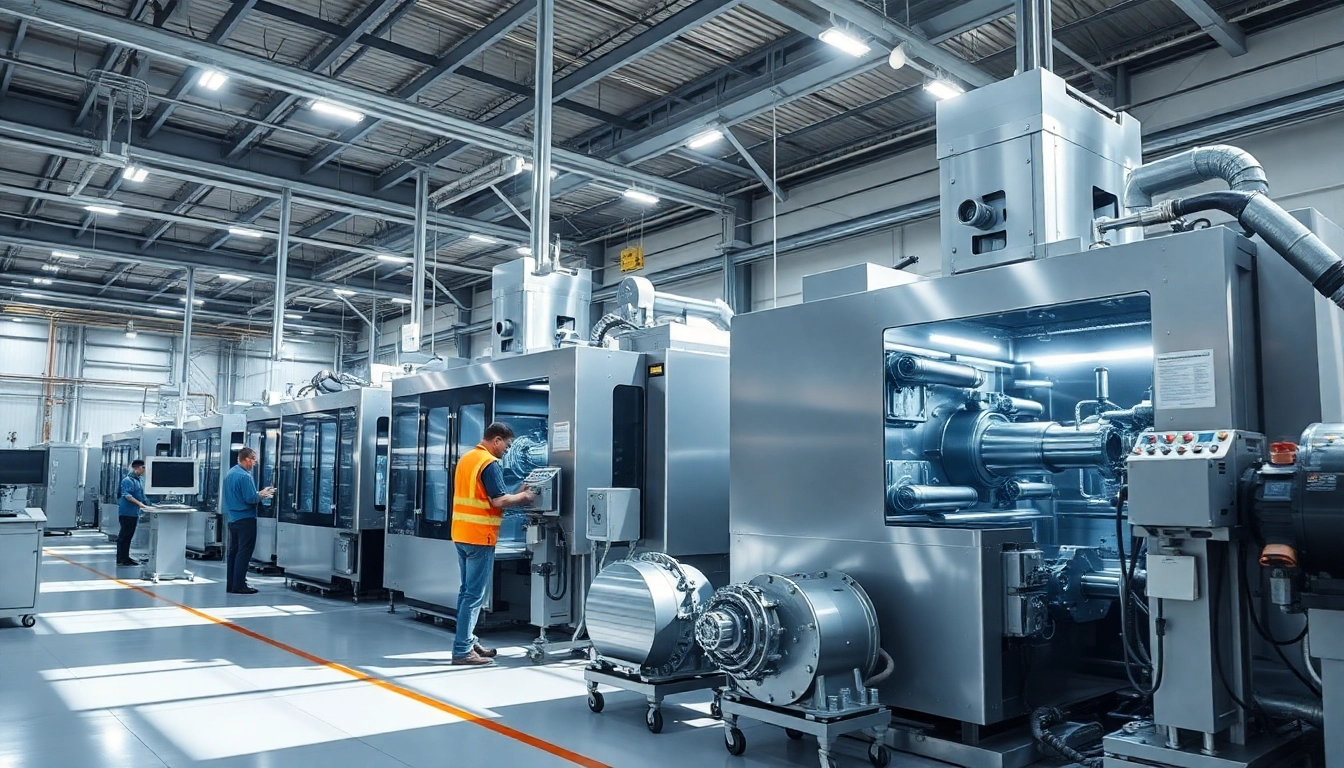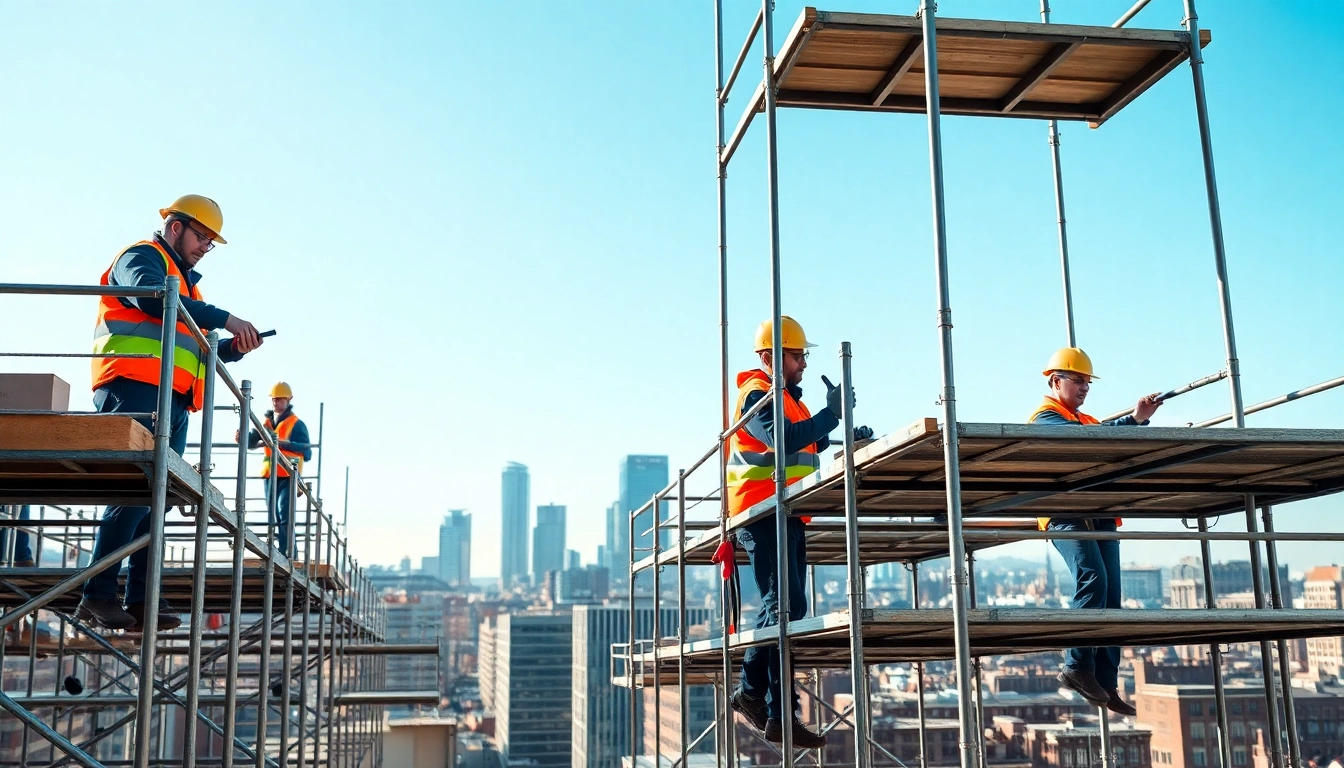Understanding Diecasting in Malaysia
Diecasting has emerged as a critical manufacturing process in Malaysia, contributing significantly to the country’s industrial landscape. As a specialized technique for producing metal parts, diecasting offers precision, efficiency, and versatility, making it a preferred choice for various industries, including automotive, electronics, and consumer goods. When exploring options, diecaster malaysia provides comprehensive insights into the benefits of this manufacturing method.
What is Diecasting?
Diecasting is a metal casting process that involves forcing molten metal under high pressure into a mold cavity. This technique allows manufacturers to create complex shapes with high dimensional accuracy and smooth surfaces. Typically, metals such as aluminum, zinc, and magnesium are used in diecasting due to their favorable properties, including lightweight and corrosion resistance. The result is a final product that meets stringent quality standards and performance requirements.
The Evolution of Diecasting Techniques
Diecasting has evolved significantly over the decades. Early methods relied heavily on manual processes and minimal automation, resulting in slower production rates and higher labor costs. However, advancements in technology and machinery have led to the development of modern diecasting, characterized by:
- Cold Chamber Diecasting: Suitable for high melting point metals, this method involves pouring molten metal into a chamber before injection, minimizing contamination.
- Hot Chamber Diecasting: Ideal for metals with lower melting points, this technique allows for continuous operation, leading to faster production cycles.
- Diecasting with Robotics: The integration of robotics has enhanced precision and efficiency, enabling manufacturers to produce intricate designs with minimal human intervention.
Benefits of Choosing a Diecaster in Malaysia
Selecting a diecasting manufacturer in Malaysia offers multiple advantages:
- Cost-Effectiveness: Competitive labor and operational costs allow for affordable production, increasing profitability for businesses.
- Quality Assurance: Many manufacturers adhere to stringent quality control processes, ensuring products meet international standards.
- Rapid Prototyping: The ability to produce prototypes quickly helps companies accelerate their product development cycles.
- Skilled Workforce: Malaysia boasts a skilled workforce trained in advanced manufacturing techniques, contributing to superior product quality.
Key Players in the Malaysian Diecasting Industry
Malaysia’s diecasting industry is supported by several key players who excel in different aspects of the manufacturing process. Understanding these players is essential for businesses looking to partner with a reliable manufacturer.
Leading Diecasting Manufacturers
Several firms have established themselves as leaders in the Malaysian diecasting industry:
- Senadi Casting: Renowned for its state-of-the-art facilities and commitment to quality, Senadi Casting specializes in producing precision diecast components for various sectors.
- Alumix Industries: Focusing on aluminum diecasting, Alumix offers a range of products catering to the automotive and electronics industries.
- Malaysia Diecasting Sdn Bhd: With a strong emphasis on innovation, this company has introduced advanced techniques into its manufacturing processes.
Comparative Analysis of Competitors
The competitive landscape in the Malaysian diecasting sector is robust, with various companies vying for market share. A comparative analysis reveals:
- Companies that heavily invest in R&D tend to outperform their counterparts in terms of product innovation.
- Those with a global supply chain network can offer better pricing and delivery terms.
- Manufacturers focusing on niche markets, such as custom diecasting, often achieve higher profit margins.
Market Trends and Insights for 2025
The diecasting industry in Malaysia is poised for growth, with the following trends expected to shape the market by 2025:
- Increased Automation: The trend towards more automated production lines is expected to reduce costs and improve efficiency.
- Sustainability Initiatives: Manufacturers are focusing on sustainable practices, utilizing recycled materials, and minimizing waste.
- Export Opportunities: With the growing demand for diecast products in international markets, Malaysian manufacturers will likely expand their export capabilities.
Technological Advancements in Diecasting
Technological innovation is at the forefront of transforming diecasting processes, enabling manufacturers to enhance product quality and operational efficiency.
Innovative Machinery and Equipment
Modern diecasting relies on advanced machinery that integrates cutting-edge technology:
- High-Pressure Machines: These machines are designed to inject molten metal at a high pressure, ensuring the formation of intricate details and complex geometries.
- CNC Machining: Complementing diecasting, CNC machining allows for precise finishing of diecast components, enhancing their functionality.
- 3D Printing: Emerging as a prototyping tool, 3D printing is being used for creating die patterns, significantly reducing lead times.
Automation and Efficiency in Production
The introduction of automation technologies has revolutionized diecasting production:
- Robotic Arms: Used for material handling and assembly, robotic arms improve safety and reduce labor costs.
- Real-Time Monitoring: IoT-enabled devices help monitor production processes in real-time, allowing for immediate adjustments to maintain quality.
- Predictive Maintenance: Implementing AI-driven predictive maintenance can reduce downtime and extend machinery life.
Future Technologies Shaping Diecasting
Looking ahead, several technologies are expected to play a pivotal role in the evolution of diecasting:
- AI and Machine Learning: These technologies will enhance decision-making processes, allowing for optimized production schedules and improved quality control.
- Enhanced Materials: The development of advanced alloys and composites will lead to lighter and stronger diecast products.
- Virtual Reality (VR): VR can be utilized for training purposes, helping employees understand complex diecasting processes virtually.
Quality Standards and Certifications
Adhering to quality standards is essential for diecasting manufacturers to maintain competitiveness in the global market.
Importance of Industry Certifications
Certifications such as ISO 9001 and TS 16949 play a crucial role in enhancing manufacturer credibility:
- ISO 9001: This certification demonstrates a commitment to quality management principles.
- TS 16949: Especially relevant for the automotive sector, this certification focuses on meeting specific industry requirements.
Quality Control Processes Explained
Quality control in diecasting involves several stages:
- Incoming Material Inspection: Raw materials must be inspected for compliance with specified standards.
- In-Process Monitoring: Continuous monitoring during production helps identify defects early in the process.
- Final Product Testing: Rigorous testing of finished products ensures they meet the necessary specifications.
How to Choose a Reliable Diecaster
Selecting the right diecaster involves evaluating several factors:
- Experience and Expertise: Look for a manufacturer with extensive industry experience and a track record of successful projects.
- Facility Capabilities: Ensure they have modern equipment and technology for optimal production efficiency.
- Customer Feedback: Reviewing testimonials and case studies can provide insights into the manufacturer’s reliability and quality.
Environmental Considerations in Diecasting
The diecasting sector is increasingly focused on sustainable practices to minimize its environmental impact.
Sustainable Practices in the Industry
Many diecasters are adopting green initiatives, such as:
- Recycling Scrap Metal: Utilizing scrap metal in the diecasting process helps reduce waste and lower production costs.
- Energy Efficiency: Implementing energy-saving technologies reduces carbon footprints and operational costs.
- Biodegradable Materials: Some manufacturers are researching the use of biodegradable binders and coatings in diecasting.
Impact of Regulations on Manufacturing
Regulatory bodies are imposing stricter environmental regulations on manufacturers:
- Companies must comply with emissions standards and waste management policies.
- Manufacturers are investing in cleaner technologies to meet these regulations and avoid penalties.
Future of Eco-Friendly Diecasting Solutions
The future of diecasting may include further innovations aimed at sustainability:
- Development of Eco-Friendly Alloys: Ongoing research will likely yield alloys that are less harmful to the environment.
- Green Certifications: Manufacturers may seek certifications specifically for sustainability initiatives, enhancing their market reputation.

